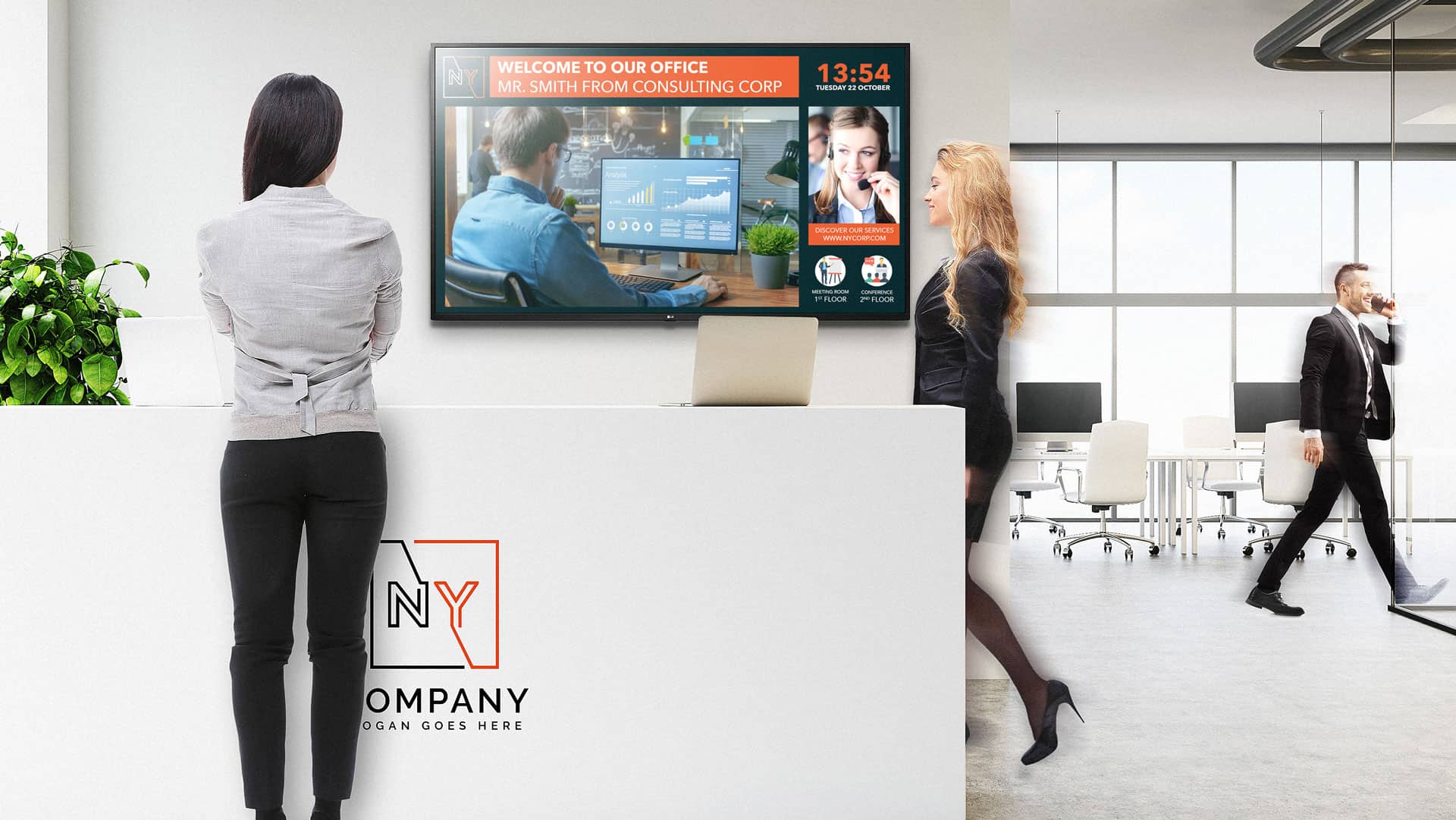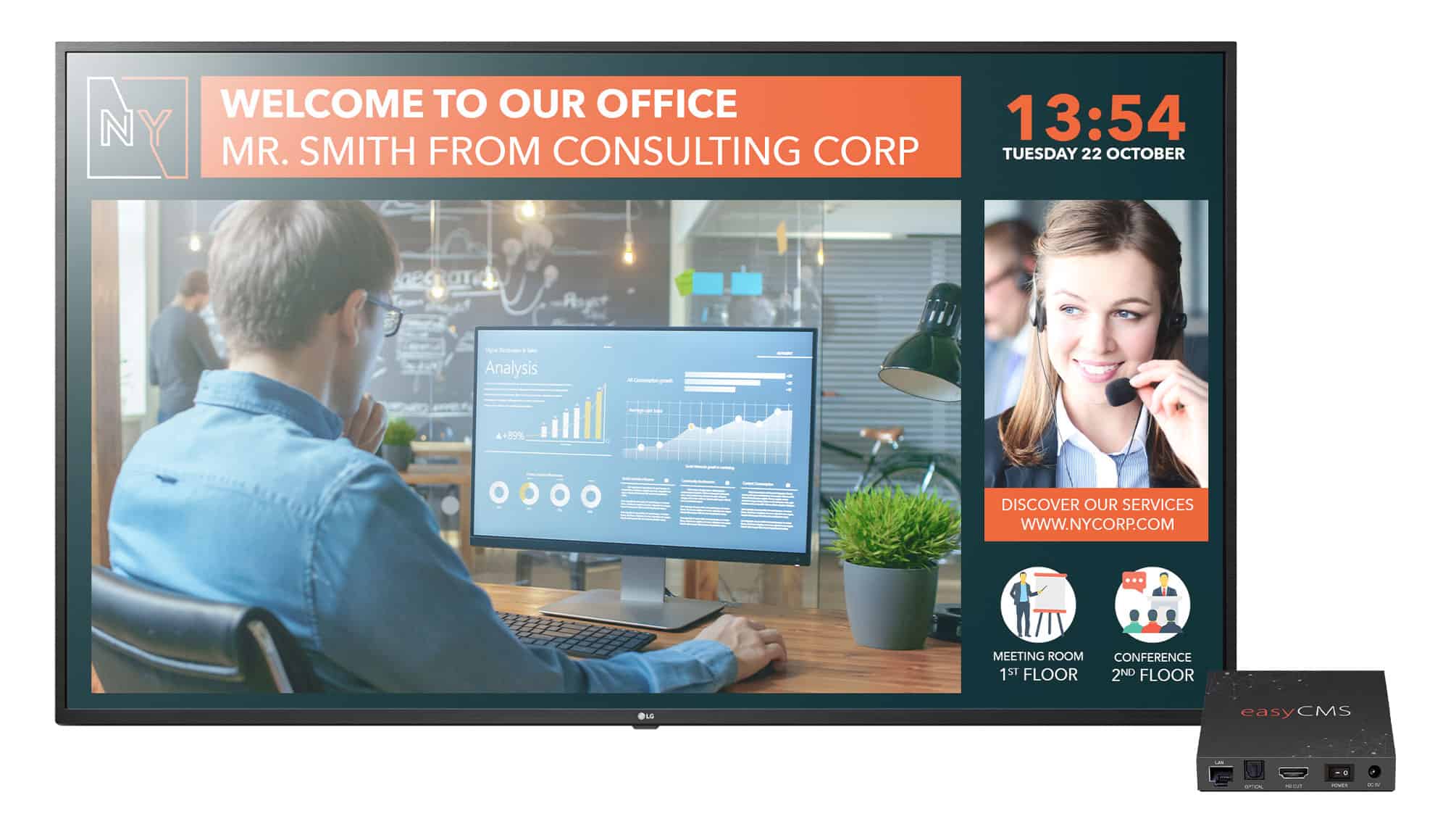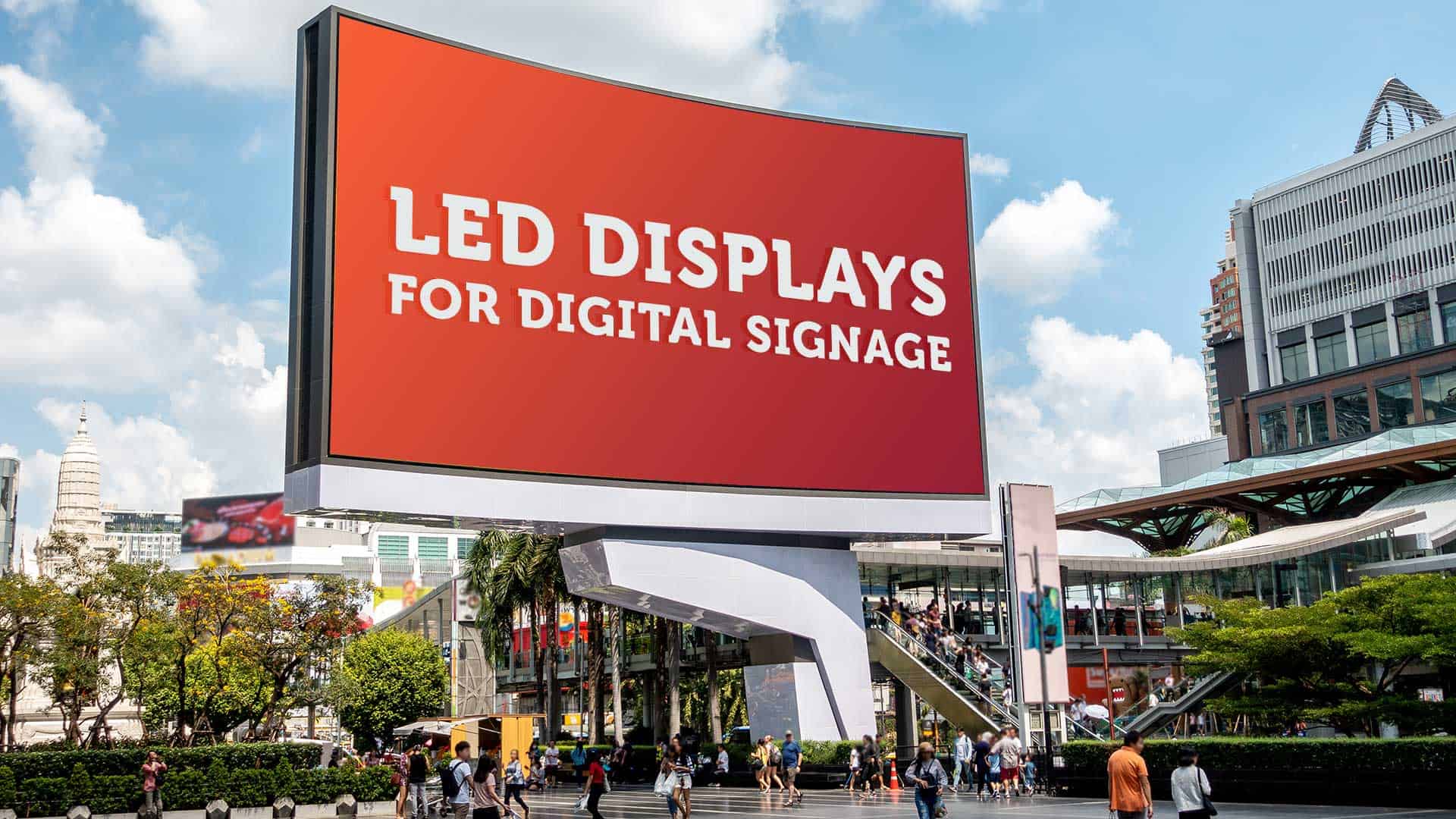What is digital signage ?
Digital signage refers to the use of digital displays, such as LCD or LED screens, for advertising, informational, or entertainment purposes. It is a rapidly growing industry that has seen a surge in popularity in recent years, due to advancements in technology and the increasing availability of affordable digital displays.

Digital signage is used in a wide range of settings, including retail stores, airports, hotels, restaurants, hospitals, and other public spaces. The main advantage of digital signage over traditional forms of advertising, such as print ads or billboards, is its ability to provide dynamic, interactive, and highly engaging content. Digital signage can display real-time information, such as weather updates or news headlines, and can also be used to showcase videos, images, and animations.
Another advantage of digital signage is its ability to target specific audiences. For example, a retailer can use digital signage to display advertisements or promotions tailored to specific demographics, such as gender, age, or location. This level of targeting helps businesses to effectively reach their desired audience and to increase the effectiveness of their advertising efforts.
Another advantage of digital signage is its ability to be updated remotely. Content can be easily changed and updated remotely, making it a more flexible and cost-effective form of advertising compared to traditional forms of advertising that require physical updates.

Digital signage also offers a unique opportunity to gather data and insights into consumer behavior. For example, digital signage can track the number of people who view an advertisement, how long they view it for, and how often they interact with it. This data can be used to improve the effectiveness of future advertising campaigns and to better understand consumer behavior.
In conclusion, digital signage is a rapidly growing industry that offers a number of advantages over traditional forms of advertising. Its ability to provide dynamic and engaging content, target specific audiences, and gather data and insights into consumer behavior make it an increasingly popular choice for businesses of all sizes.
Digital signage can be used by a wide range of organizations
Retailers: Retailers can use digital signage to display interactive product displays, promotions, and advertisements in their stores to engage customers and drive sales.
Hospitals and Healthcare Centers: Digital signage can be used in hospitals and healthcare centers to provide patients with information about their care and the services available, and to display educational content.
Restaurants: Restaurants can use digital signage to display menus, promotions, and advertisements, and to engage customers with interactive displays and games.
Hotels and Resorts: Hotels and resorts can use digital signage to provide guests with information about their stay, including directions, amenities, and promotions.
Museums and Galleries: Museums and galleries can use digital signage to enhance the visitor experience by providing educational content, interactive displays, and virtual tours.
Public Transport: Digital signage can be used in public transport, such as buses and trains, to provide passengers with real-time information about schedules, routes, and disruptions.
Corporate Offices: Digital signage can be used in corporate offices to display company news, announcements, and promotional content, and to enhance the employee experience.
In conclusion, digital signage can be used by a wide range of organizations to engage customers, provide information, and enhance the overall experience, among other benefits.

Digital signage and traditional displays and billboards differ in several key ways
Dynamic Content: Digital signage allows for real-time updates and the display of dynamic, interactive, and highly engaging content, such as videos, images, and animations. In contrast, traditional displays and billboards typically only display static images and text.
Targeted Advertising: Digital signage can display advertisements or promotions tailored to specific demographics, such as gender, age, or location. Traditional displays and billboards do not have the same level of targeting capabilities.
Remote Updating: Content on digital signage can be easily changed and updated remotely, making it a more flexible and cost-effective form of advertising compared to traditional displays and billboards, which typically require physical updates.
Data and Insights: Digital signage can track the number of people who view an advertisement, how long they view it for, and how often they interact with it, providing valuable data and insights into consumer behavior. Traditional displays and billboards do not provide this level of data and insights.
Interactivity: Digital signage allows for user interaction, such as touchscreens, allowing consumers to engage with advertisements in a more interactive and immersive way. Traditional displays and billboards do not offer the same level of interactivity.
In summary, digital signage offers several key advantages over traditional displays and billboards, including the ability to display dynamic, interactive, and targeted content, and to gather data and insights into consumer behavior.

Why use a CMS and what is it
A CMS, or Content Management System, is a software platform that allows users to manage, create, and distribute digital content, such as images, videos, and animations, for use in digital signage.
A CMS for digital signage typically includes tools for scheduling and playing content, remotely updating displays, and tracking metrics such as viewership and engagement. Some CMS solutions may also include features such as templates, interactive elements, and real-time data integration.
The use of a CMS in digital signage is essential for ensuring that content is updated and relevant, as well as for maximizing the impact of advertising or informational messages. By providing a centralized platform for managing digital signage content, a CMS helps organizations to streamline their workflow, minimize the time and effort required to create and update content, and ensure that their digital signage displays are always up-to-date and effective.
Additionally, the use of a CMS in digital signage allows organizations to quickly and easily make changes to their displays in response to changes in the market or in response to real-time data, such as weather or traffic updates.

Return on investement (ROI) of Digital Signage
The return on investment (ROI) of digital signage for retail can vary depending on several factors, including the size of the investment, the cost of hardware and software, and the cost of content creation and management. However, some of the benefits of digital signage that can contribute to a positive ROI for retailers include:
Increased Sales: Digital signage can attract customers, engage them with dynamic and interactive content, and drive sales by promoting products and services.
Increased Brand Awareness: Digital signage can be used to promote brand awareness and messaging, helping retailers to establish and maintain a strong brand presence.
Reduced Operating Costs: Digital signage can reduce operating costs by eliminating the need for traditional forms of advertising, such as print and broadcast ads.
Increased Customer Satisfaction: Digital signage can enhance the shopping experience by providing customers with helpful information, such as product descriptions, promotions, and interactive displays.
Data and Analytics: Digital signage can provide valuable data and insights into customer behavior, helping retailers to make informed decisions about product placement, advertising, and customer engagement.
In conclusion, the ROI of digital signage for retail can be substantial and can help retailers to increase sales, improve brand awareness, and enhance the customer experience, among other benefits. However, it’s important to consider the specific needs of each retailer, including their budget, goals, and target audience, when evaluating the ROI of digital signage.

Managing a network of screens using a CMS in digital signage offers several advantages
1. Centralized control: With a CMS, administrators can manage and monitor all screens in a network from a single location, making it easier to ensure that content is consistent across all displays.
2. Real-time monitoring: A CMS can provide real-time information about the performance of each screen in the network, including any technical issues or problems with the displays. This allows administrators to quickly identify and resolve any issues, ensuring that the network of screens is always up and running.
3. Scheduling and automation: A CMS can be used to schedule content and automate the playback of content on each screen in the network. This saves time and reduces the likelihood of errors, as content can be programmed to play automatically at specific times and dates.
4. Data analysis: A CMS can collect data on viewership, engagement, and other metrics, allowing organizations to better understand the impact of their digital signage campaigns. This information can be used to make data-driven decisions about future content and to optimize campaigns for maximum impact.
5. Remote management: A CMS can be accessed from anywhere, allowing administrators to manage and monitor the network of screens from a remote location. This is particularly useful for organizations with multiple locations or for those with large networks of screens.
Overall, monitoring a network of screens using a CMS in digital signage provides organizations with greater visibility and control over their digital signage campaigns, allowing them to improve the efficiency, effectiveness, and impact of their displays.

Commercial Digital Dignage TV versus traditional LCD TV
1. Purpose: Commercial digital signage TVs are specifically designed for use in public and commercial spaces, while traditional LCD TVs are designed for home entertainment.
2. Display Size: Commercial digital signage TVs are typically larger and can be customized to specific sizes and shapes, while traditional LCD TVs are limited to standard sizes.
3. Picture Quality: Commercial digital signage TVs often have better picture quality, with higher brightness, contrast, and color accuracy, compared to traditional LCD TVs.
4. Viewing Angle: Commercial digital signage TVs are designed to be viewed from wider angles, making them more suitable for public spaces, while traditional LCD TVs are designed for viewing from a single, narrow angle.
5. Durability: Commercial digital signage TVs are built to be more durable and long-lasting, as they are exposed to more environmental factors and used for longer periods of time, compared to traditional LCD TVs.
6. Interactivity: Commercial digital signage TVs often offer interactive features, such as touchscreens and gesture control, that traditional LCD TVs do not have.
7. Content Management: Commercial digital signage TVs often come with advanced content management systems that allow for the easy creation, scheduling, and distribution of content, while traditional LCD TVs do not.
8. Cost: Commercial digital signage TVs are often more expensive than traditional LCD TVs, but they offer a more robust and flexible solution for public and commercial displays.
In conclusion, commercial digital signage TVs are a more suitable choice for public and commercial displays due to their larger size, better picture quality, increased durability, and advanced content management capabilities.

LED billboards for digital signage
Conclusion
In conclusion, digital signage offers numerous benefits for organizations looking to enhance their marketing and communication strategies. Its ability to provide dynamic, interactive, and visually appealing content in real-time makes it an excellent tool for capturing the attention of customers and delivering messages effectively..
If you are interested in exploring the benefits of digital signage for your organization, we would be happy to help. Contact us today to learn more about how we can help you implement a successful digital signage solution that meets your specific needs and goals.
